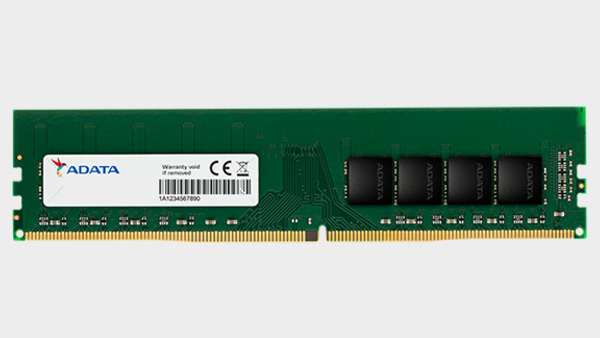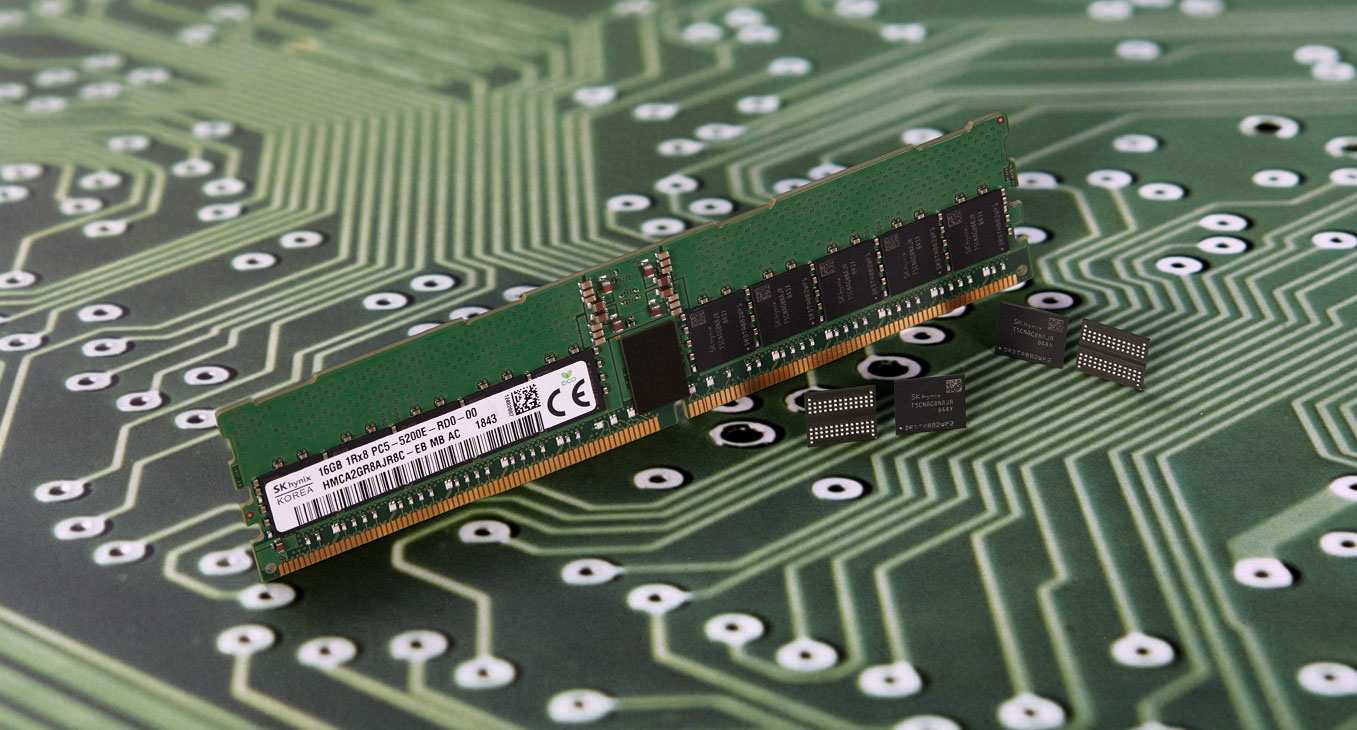Adata's DDR5 RAM is optimised for 'latest Intel platforms' and coming to CES 2021
Now all we need are compatible CPUs. Looking at you, Intel.

Adata is planning on bringing its first DDR5 DRAM module to CES 2021, the tech show taking place virtually next week. The new module would represent another step towards widespread adoption of the next-generation memory standard, and would see Adata ready for the first products with DDR5 support, perhaps even Intel Alder Lake chips later this year.

Best CPU for gaming: the top chips from Intel and AMD
Best graphics card: your perfect pixel-pusher awaits
Best SSD for gaming: get into the game ahead of the rest
Adata has jumped the gun on CES 2021 and already announced some of its show stars. Among the laptops, SSDs, and even 'Gaming Gum' (we're self-proclaimed gaming gum connoisseurs here at PC Gamer), Adata has also slipped mention of a next-generation DDR5 module, with speeds 'up to' 8,400MT/s.
All we know of the module is that it's currently sitting under the Adata brand, not the gaming-focused XPG brand. There's also no explicit model name or capacity given, so we can only assume this will be more of a teaser for the real deal later this year than a specific product announcement.
"The future of DRAM is here in the form of the ADATA DDR5 DRAM module," Adata says in a press release. "Compared to its predecessors, this module will provide a significant speed boost, higher capacities, and reduced power consumption and increased bandwidth per CPU cores. The new DDR5 module will offer up to four times higher capacities, reduced power consumption to 1.1V, and speeds of up to 8400MT/s."
We're unlikely see a module of 8,400MT/s calibre quite yet, however. Adata is a fabless memory manufacturer, and that means it'll be relying on another's fabs to produce its chips. From that lot, we know Micron and SK Hynix intend to launch with speeds closer to 4,800-5,600MT/s at first with faster speeds arriving over the coming years.
That means the initial wave of DDR5 RAM, expected to arrive in earnest in the latter half of 2021, may not run at faster speeds than some high-end DDR4 kits today. Yet DDR5 has other benefits over today's widely-used RAM sticks.

DDR5 will require less voltage than DDR4, 1.1v by standard, and even at 5,000MT/s and above speeds. As such could offer greater overclocked performance on top of stock performance with a little more juice, as is the case with high-performance DDR4 kits today.
The biggest gaming news, reviews and hardware deals
Keep up to date with the most important stories and the best deals, as picked by the PC Gamer team.
While perhaps not of great consideration for gamers, you can also expect higher capacities per DRAM chip with DDR5. That's a little more pivotal for use within servers—Intel and AMD are both said to be bringing DDR5 support with their next-gen datacentre chips.
DDR5 also incorporates EEC support, or Error Correction Code. That's usually reserved for servers and workstations right now, but soon it will make its way into even gaming PCs en masse, perhaps pleasing Linux creator Linus Torvalds in the process.
As for gaming performance, faster memory has proven itself an important consideration in any gaming PC build. Yet to harness DDR5, we'll need compatible processors in our rigs. These could be on the way this year, as Intel Alder Lake is tipped to arrive with the new memory standard, alongside a new hybrid architecture design and socket.
We're still waiting on further evidence that DDR5 is, in fact, a part of Intel's new hybrid package. It's looking likely, at least, with another recent press release from Adata (via TechPowerUp) reporting that the company has been working with MSI and Gigabyte on DDR5 memory alongside the "latest Intel platforms."
AMD is similarly rumoured to be bringing DDR5 support with its Zen 4 processors, which we're unlikely to hear more about until late-2021/2022.
In the meantime, there's Intel Rocket Lake CPUs to consider, which are likely to arrive in March.

Jacob earned his first byline writing for his own tech blog. From there, he graduated to professionally breaking things as hardware writer at PCGamesN, and would go on to run the team as hardware editor. He joined PC Gamer's top staff as senior hardware editor before becoming managing editor of the hardware team, and you'll now find him reporting on the latest developments in the technology and gaming industries and testing the newest PC components.

